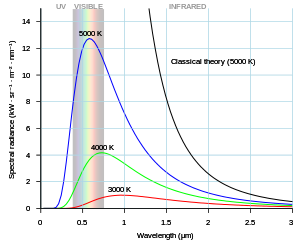Planck quantised the energy of light in order to solve the black body radiation problem. However, I am confused as to exactly what he quantised. On one hand, I have seen that he quantised the energy of oscillators in the black body (source below).

However, the second version of the story I've heard is that it is simply that light energy is given off in discrete chunks (where every photon itself can have any value of energy it likes depending on frequency and is not quantised).
To me, the first idea doesn't make sense because $E=hf$ and as $f$ can be any real number that means the energy of each photon can be any real number. I would believe the second version, however I don't understand how this version of quantisation leads to reducing the number of high frequency waves emitted and thus solving the UV catastrophe. Could you please explain exactly how releasing energy in chunks (of arbitrary size themselves) means less will be released in the higher frequencies?

